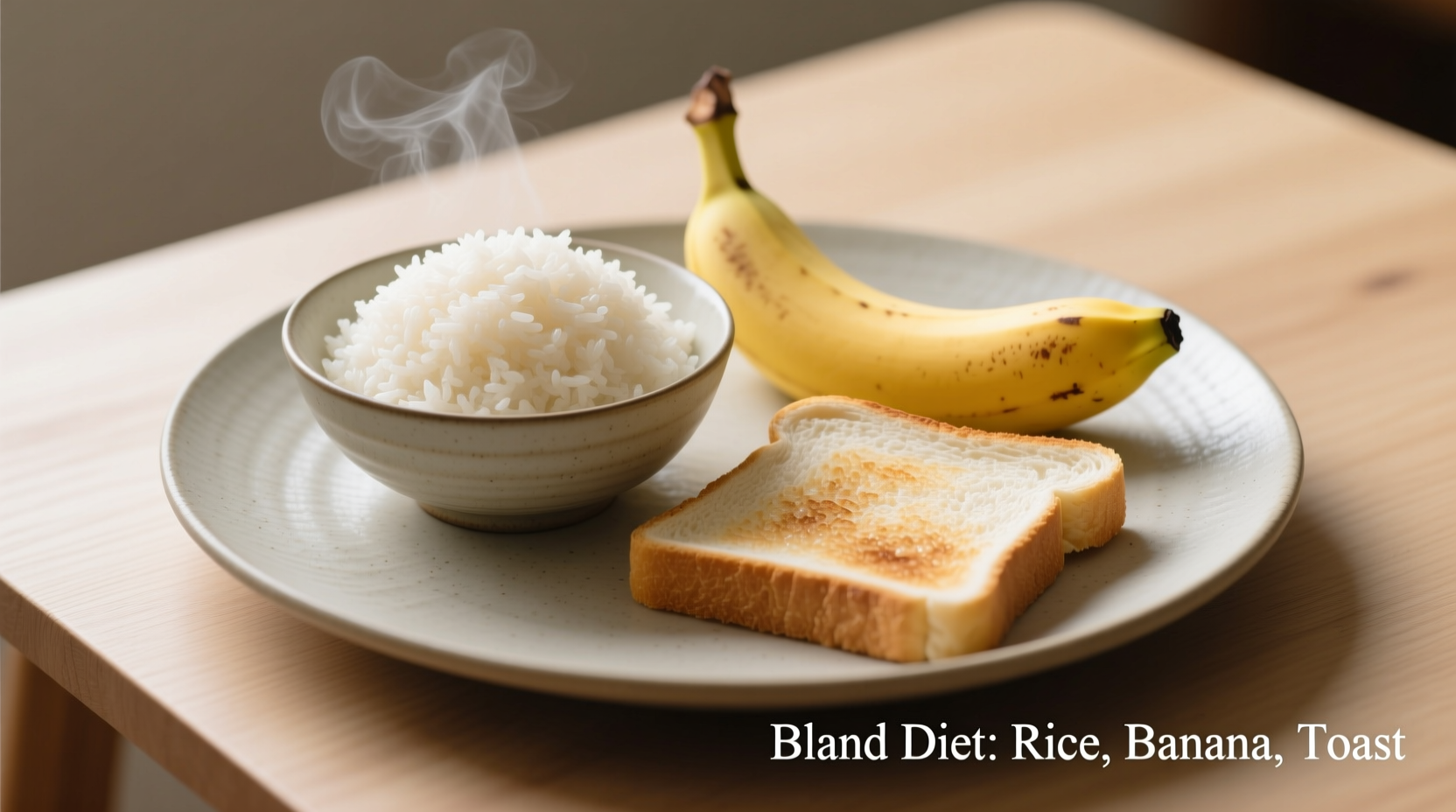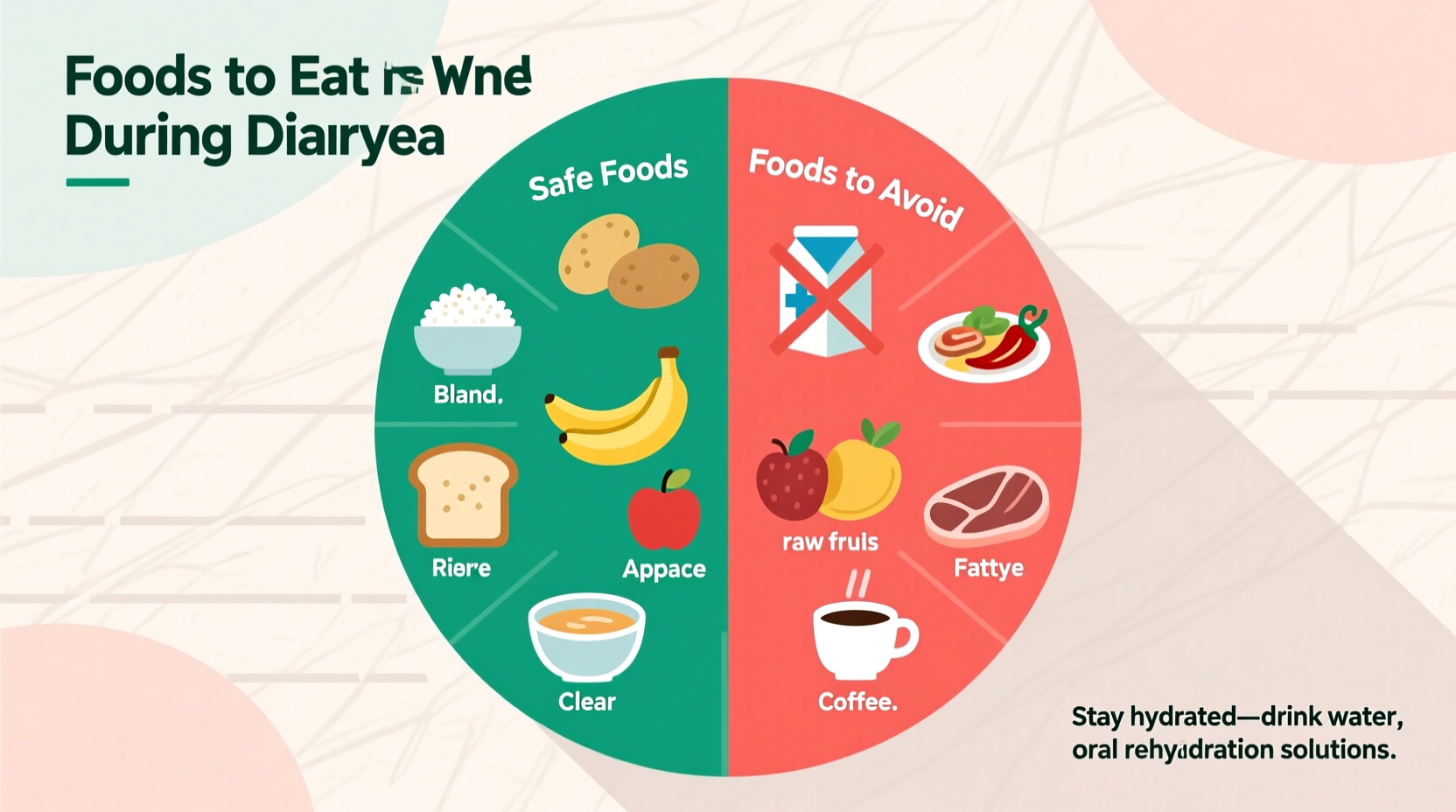If you're experiencing diarrhea, focus on bland, low-fiber foods that are gentle on your digestive system. The most recommended options include bananas, white rice, applesauce, and toast (the BRAT diet), plus broth-based soups, boiled potatoes, and oral rehydration solutions. Avoid dairy, fatty foods, spicy dishes, caffeine, and artificial sweeteners until symptoms improve. Proper hydration with water, clear broths, or oral rehydration solutions is equally critical as food choices.
When diarrhea strikes, your digestive system needs immediate relief. Choosing the right foods can shorten your discomfort by 24-48 hours according to Mayo Clinic research. This guide provides medically-backed dietary strategies that actually work, based on current gastroenterological guidelines.
Your Immediate Action Plan
During the first 24 hours of diarrhea, your primary goals should be:
- Preventing dehydration with electrolyte-balanced fluids
- Introducing easily digestible foods gradually
- Avoiding irritants that worsen symptoms
Most acute diarrhea cases resolve within 2-3 days with proper dietary management. The following recommendations apply to viral or bacterial diarrhea in adults and children over 2 years old. Infants, elderly individuals, or those with chronic conditions should consult a healthcare provider immediately.
Hydration: Your First Priority
Dehydration poses the greatest risk during diarrhea. Replace lost fluids with:
- Oral rehydration solutions (like WHO-ORS or store equivalents)
- Clear broths or bouillon
- Water with a pinch of salt and sugar
- Weak herbal teas (chamomile, ginger)
Avoid fruit juices, sports drinks, and carbonated beverages which can worsen symptoms due to high sugar content. The CDC recommends drinking 1 cup of fluid after each loose stool.
| Fluid Type | Recommended Amount | Why It Works |
|---|---|---|
| Oral Rehydration Solution | 1-2 cups after each episode | Optimal electrolyte balance proven to reduce dehydration |
| Clear Broth | 1/2 cup hourly as tolerated | Provides sodium without irritating digestive tract |
| Water with pinch of salt/sugar | As needed between episodes | Homemade alternative when ORS unavailable |
Best Foods for Diarrhea Recovery
Introduce solid foods once vomiting stops and you can keep fluids down. Start with small portions (1/4 cup) every 2-3 hours:
The Modified BRAT Diet
While the traditional BRAT diet (Bananas, Rice, Applesauce, Toast) remains popular, modern guidelines recommend enhancing it with additional protein sources for better nutrition:
- Bananas - Rich in potassium which replaces lost electrolytes
- White rice - Low-fiber carbohydrate that's easy to digest
- Applesauce - Contains pectin which helps firm stools
- Toast - Choose plain white bread, not whole grain
- Boiled potatoes (without skin) - Provides additional potassium
- Plain oatmeal - Introduce after first 24 hours
- Lean proteins (chicken, turkey) - Add after symptoms improve

Foods That Worsen Diarrhea
Avoid these common irritants until fully recovered:
| Foods to Avoid | Why They're Problematic | How Long to Avoid |
|---|---|---|
| Dairy products | Temporary lactose intolerance often develops during diarrhea | 3-7 days after symptoms stop |
| Fatty or fried foods | Speed intestinal transit time, worsening diarrhea | Until fully recovered |
| Spicy foods | Irritate already sensitive digestive lining | Until fully recovered |
| Artificial sweeteners | Sorbitol and mannitol have laxative effects | Until fully recovered |
When to Seek Medical Attention
Dietary management works for most short-term diarrhea cases, but certain symptoms require professional care:
Seek immediate medical help if you experience:
- Blood or black stools
- Fever above 102°F (39°C)
- Signs of severe dehydration (dizziness, minimal urination)
- Symptoms lasting longer than 48 hours in adults
- Diarrhea lasting more than 24 hours in children
According to the National Institute of Diabetes and Digestive and Kidney Diseases, approximately 179 million people in the United States experience acute diarrhea annually, with most cases resolving within 1-2 days through proper hydration and dietary management.
Sample 24-Hour Recovery Plan
Follow this timeline for optimal recovery:
- Hours 0-6: Focus exclusively on oral rehydration solutions (sip 2-4 oz every 15-20 minutes)
- Hours 6-12: Introduce small amounts of bananas and plain white rice (1/4 cup portions)
- Hours 12-24: Add applesauce, toast, and boiled potatoes as tolerated
- Day 2: Gradually incorporate lean proteins and cooked vegetables
- Day 3: Return to normal diet if symptoms have resolved
Probiotic-rich foods like yogurt (once dairy is tolerated) can help restore gut bacteria balance. A 2018 meta-analysis in Nutrients journal found certain probiotic strains reduced diarrhea duration by approximately 25 hours.
Preventing Future Episodes
After recovery, support digestive health with:
- Gradual reintroduction of fiber-rich foods
- Regular probiotic consumption
- Proper food handling to prevent foodborne illness
- Adequate hydration even when healthy
Remember that each person's digestive system responds differently. Keep a food journal during recovery to identify your personal triggers. Most importantly, trust your body's signals - if a food causes discomfort, eliminate it temporarily regardless of general recommendations.











 浙公网安备
33010002000092号
浙公网安备
33010002000092号 浙B2-20120091-4
浙B2-20120091-4